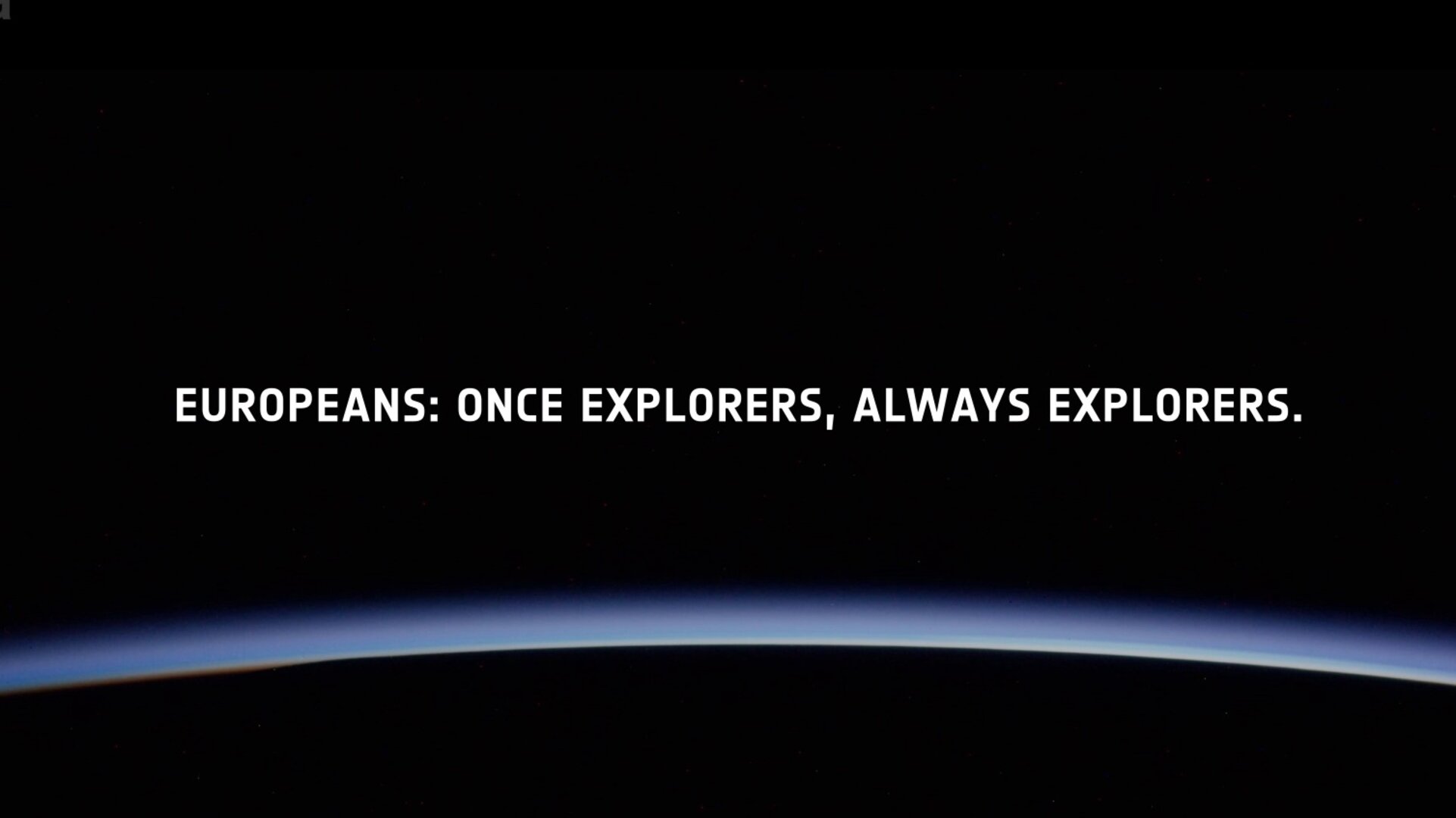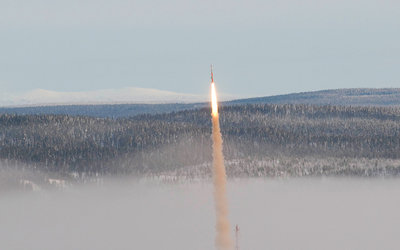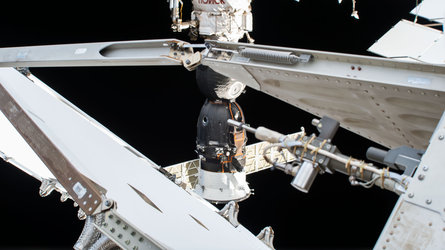Research Announcements
ESA research announcements are the official access routes for institutional users to use research facilities managed by ESA's Directorate of Human and Robotic Exploration. The Science Department of ESA’s Human Spaceflight and Exploration Directorate recently undertook an extensive exercise to create a new strategy, focusing on a set of newly-defined goals to positively shape its research programme and maximise research.
The roadmaps can be found here.
Scientists are strongly encouraged to address at least one the topics highlighted in the document above in their proposal. The following research announcement opportunities are available:
NASA and ESA intend to conduct a Mars Sample Return (MSR) campaign to bring martian samples safely to Earth for scientific research.
Mars Sample Return (MSR) has been a high priority for the planetary science community for more than four decades. Analysing martian samples in terrestrial laboratories would advance our understanding of Mars in multiple ways that are impossible using in-situ missions or martian meteorites.
The overall MSR concept includes three distinct phases:
- Selecting and collecting scientifically suitable samples on Mars;
- Retrieving the samples on Mars and transporting them to Earth;
- Receiving the samples on Earth and making them available for the science community.
To maximise the science return of the MSR campaign, NASA and ESA plan to generate multiple opportunities for the international science community to participate in the science planning activities and ultimately in the sample analysis. These opportunities will typically be based on internationally open competitions or workshops.
Open Announcements of Opportunities (AOs) and Calls for the MSR campaign are shown below.
Call for membership on the Sample Receiving Project Measurement Definition Team for Mars Sample Return
NASA and ESA solicit proposals for membership of a Measurement Definition Team (MDT). The MDT is chartered to assess the measurement and instrumentation needs for the MSR Sample Receiving Project (SRP) facility that will process samples brought back from Mars. The MDT is planned to be active from September 2023 and the tasks are expected to take at least seven months, with the schedule being adapted as required. Early career scientists are specifically encouraged to apply.
For more information about this opportunity, please refer to the following documents:
- Call for membership of the Measurement Definition Team (PDF).
- Terms of reference for the Measurement Definition Team (PDF).
The deadline for submission of letters of application and accompanying document is 17 July 2023 at 15:00 UTC (08:00 PDT, 11:00 EDT, 17:00 CEST).
Appointment of selected members is planned for September 2023. The email address for submissions is: nasa-esa-mdt1@esa.int
Information session for applicants
A Q&A session for potential applicants took place on 28 June 2023. The recording of the session for potential applicants can be found in this link (password: MarsSampleReturn1!). The slides of the session are available in this PDF, and the all the answers are collected here.
Gateway research announcements
Gateway is a crew-tended platform in lunar vicinity which will be assembled during the 2020s through international partnership between ESA, NASA, CSA and JAXA.
The Gateway is a platform where scientific research can be performed in deep space, taking advantage of the location and environment that is found there and facilitating research at the surface. The research performed at Gateway will address fundamental science questions, support exploration on the Moon and prepare for human missions to Mars. Open Research Announcements for Gateway are shown below.
Research Announcement for European Radiation Sensor Array (ERSA) and Internal Dosimeter Array (IDA) International Science Teams
The first three scientific payloads to fly with the first Gateway elements are ESA’s European Radiation Sensor Array (ERSA), Internal Dosimeter Array (IDA) and NASA’s Heliophysics Environmental and Radiation Measurement Experiment Suite (HERMES). Together the instruments of these payloads will characterise the radiation, plasma, and fields environment at the Gateway to prepare for further exploration activities and to perform scientific investigations in the deep space environment.
The science goals of ERSA and IDA is to conduct environmental radiation and space weather science investigations uniquely enabled by the Gateway.
The ERSA Science Goals and Objectives are:
- Long-term measurement of radiation environment outside and inside Earth’s magnetosphere;
- The investigation of concepts for real-time radiation alerts;
- The provision of operational space weather services;
- The modelling of the magnetosphere and radiation belt.
The IDA Science Goals and Objectives are to:
- Measure radiation field parameters: particle fluence, absorbed dose, dose rate, LET spectra and dose equivalent over a wide timeframe;
- Study radiation shielding effects of the Gateway spacecraft structure;
- Compare internal radiation to outside radiation measurements provided by ERSA and NASA’s Heliophysics Environmental and Radiation Measurement Experiment Suite (HERMES).
The value of parallel measurements by ERSA and HERMES outside of Gateway and IDA inside of Gateway will contribute to further study:
- The extra-vehicular radiation environment;
- The particle transfer and induced radiation inside the Gateway;
- The nature of GCR-SEPs-shielding interactions;
- The influence of extra- and intra- vehicular radiation environment on hardware and biological tissues.
The overall intention is to have the capability of space radiation monitoring external and internal to Gateway that will be relevant to scientific research, medical operations and space weather applications.
The ERSA and IDA research announcement of opportunity can be found here.
Topical Team opportunity
ESA has a long history of supporting so-called Topical Teams to enhance European collaboration and focus on research. Topical Teams, depending on their subject, include experts from European universities, research entities and industries who together formulate succinct and relevant proposals for comprehensive research. Support to new Topical Teams in the “Science in the Space Environment (SciSpacE)” programme will continue and expanded to multidisciplinary research to increase international collaboration.
Drop tower
The Bremen drop tower is one of the tallest and best-known drop tower facilities in Europe. At the heart of the facility is the 146-m tall tower surrounded by support facilities that include control rooms, laboratories and workshops. Capsules are released from a height of 120 m offering 4.74 s of microgravity experiment time. The capsule experiences a deceleration of up to 50 g after the experiment is completed. Through this continuously-open research announcement, scientists are invited to apply with experiment proposals that use the unique capabilities of the drop tower.
More information and application here.
Ground-based facilities programme
ESA's ground-based facilities programme is a highly valuable low-cost tool allowing scientists to push forward their understanding of basic science aspects, preparing for more complex spaceflight experiments and advancing human and biological aspects for exploration. Through this continuously-open research announcement, scientists are invited to apply with experiment proposals that use the capabilities of the facilities in this programme.
More information and application here.
Investigating biological effects of space radiation
Radiation in space is considered a potential ‘show-stopper’ for human exploration of space. ESA' programme "Investigating biological effects of space radiation" (IBER) was formed to advance knowledge that is needed sustain long-duration human exploration missions. This continuously-open research announcement scientists are invited to apply with experiment proposals that use the capabilities of the facilities that are part of IBER.
Microgravity Application Promotion
Due to funding issues, this programme has been discontinued. The Microgravity Application Promotions programme will be continued in 2020 in an evolved form within ESA's Business in Space Growth Network (for more information, please go to: http://youbenefit.spaceflight.esa.int/commercialisation-of-research-and-applications-in-space/)
Parabolic flights
Parabolic flights are the only sub-orbital carriers that allow scientists to run biological, biomedical and physiological experiments in microgravity or other (reduced) gravity levels. In addition to testing facilities before use in space, parabolic flights validate operational and experimental procedures, and train astronauts for future spaceflight. Through this continuously-open research announcement, scientists are invited to apply with experiment proposals that use the the parabolic flight aircraft.
Sounding rockets
Sounding rockets launch experiments to the edge of space before falling back to Earth. These flights can carry 100-kg experiments up to 750 km high with up to 13 minutes of microgravity. Through this continuously-open research announcement, scientists are invited to apply with experiment proposals that use the sounding rocket launches that participate in this programme.
Research opportunities in 2020–2022 for ESA-sponsored sounding rockets are almost filled, this research announcement will therefore be temporarily closed from 30 June 2020.
Proposals submitted before 30 June 2020 will still be evaluated and – subject to a high science merit score as well as technical feasibility – will be considered for implementation in the 2020–2022 period.
Proposals submitted after 30 June 2020 will not be accepted nor considered for implementation for the 2020–2022 period.
This research announcement will be re-opened in the course of 2021 to solicit experiments that will be implemented in 2023–2025.
Concordia
Concordia station acts as a powerful analogue for these future missions, as it replicates many of the expected conditions of a lunar or Martian base. Such conditions include hypoxia, isolation, confinement, high levels of autonomy and social monotony, limited resources, restricted access by outside help in case of emergencies, and a hostile external environment. In order to support the implementation of scientific activities in this area, ESA is looking for a medical doctor to join the next Concordia winterover crew (leaving in the October/November 2022 timeframe).















 Germany
Germany
 Austria
Austria
 Belgium
Belgium
 Denmark
Denmark
 Spain
Spain
 Estonia
Estonia
 Finland
Finland
 France
France
 Greece
Greece
 Hungary
Hungary
 Ireland
Ireland
 Italy
Italy
 Luxembourg
Luxembourg
 Norway
Norway
 The Netherlands
The Netherlands
 Poland
Poland
 Portugal
Portugal
 Czechia
Czechia
 Romania
Romania
 United Kingdom
United Kingdom
 Slovenia
Slovenia
 Sweden
Sweden
 Switzerland
Switzerland




































